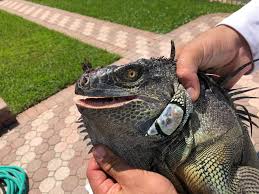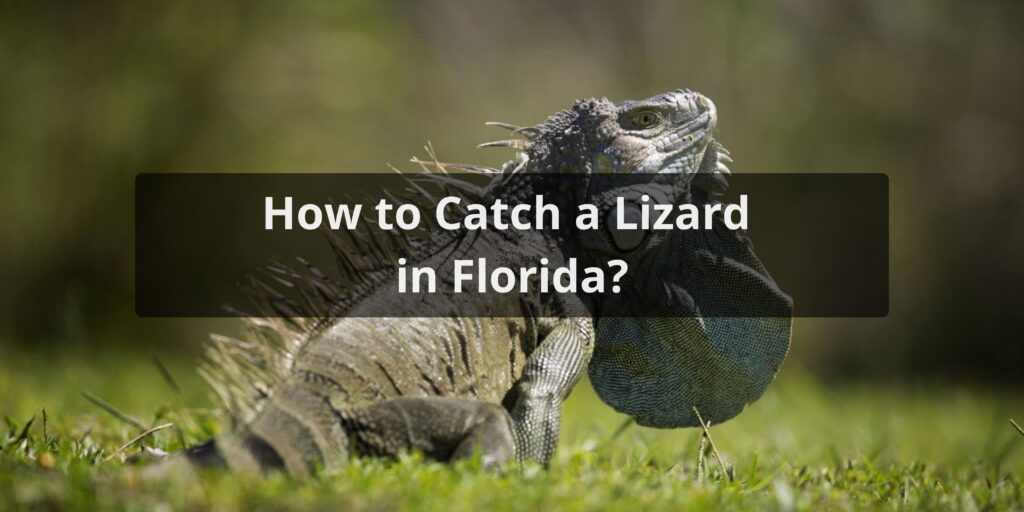Lizards are common backyard visitors in the sunny state of Florida. While some people view lizards as pests, they are generally harmless and can be fascinating creatures to observe. If you want to get a closer look at these quick reptiles, you may wish to catch one. Here is a guide on how to humanely catch a lizard in Florida.
Locating Lizards
The first step is finding lizards to catch. Lizards are cold-blooded, so they need to bask in sunny spots to regulate their body temperature. Good places to look include:
- Rocks, logs, or wood piles – Lizards like to sun themselves on these warm surfaces. Check the edges and undersides.
- Garden beds and shrubs – Lizards take cover in leaf litter and dense foliage. Gently part plants to peek inside.
- Walls and fences – Lizards climb vertical surfaces to find sunny perches. Scan stones and wood surfaces.
The best times to search are early morning when lizards first emerge and late afternoon when they are active again. Lizards generally avoid the midday heat. Focus your efforts in sunny, sheltered spots.
Catching Techniques
Once you’ve located a lizard, here are some humane methods to catch it:
By Hand

The simplest way to catch a lizard is by hand. Approach slowly and gently pick up the lizard before it has a chance to flee. Wrap your fingers loosely around its torso, supporting its legs and body. Avoid squeezing it too tightly.
This works best for slower, more docile lizards. Quick species may bolt away before you can grab them.
With a Net
Using an aquarium net is an easy way to catch faster lizards. Lower the net over the lizard, trapping it against the ground. Then scoop it up through the mesh. Position your free hand under the net to prevent the lizard from escaping through the bottom.
A small fish net or collapsible bug net both work well. Make sure the mesh holes are small enough that the lizard cannot wiggle free.
With a Noose
For very speedy or wary lizards, use a simple slip noose to snag them. Tie a loose overhand knot at one end of a piece of string or fishing line. Make a small loop just big enough for the lizard’s head to fit through.
Slowly lower the noose towards the lizard, keeping your hands back so you don’t startle it. Position the noose around the lizard’s neck and gently tighten it to secure the animal. Then carefully pick up the lizard to remove the noose.
With Glue Traps
An alternative to catching by hand is using non-toxic glue traps. Place the sticky traps along walls or rocks where you have seen lizards sunning themselves. When the lizard steps onto the trap, it will get stuck.
Check traps frequently so you can free the lizard quickly. Use cooking oil or olive oil to gently release the glue’s grip and remove the lizard. Avoid pullng too hard on trapped lizards to prevent injuring them.
Glue traps sometimes work better than chasing quick lizards yourself. But they may accidentally catch small snakes, frogs or insects, so use them judiciously.
Safe Handling
Once you’ve caught your lizard, follow these tips for safe handling:
- Support the lizard’s entire body, especially the hindlegs and tail. Don’t pick up lizards by the tail as this can injure them.
- Avoid squeezing too tightly. Lizards are fragile and can be harmed by excessive pressure.
- Be cautious of the lizard’s head. Some species can attempt to bite in self-defense.
- Wash your hands before and after handling any wild animal.
- Have a plastic tub ready to temporarily hold the lizard if needed. Add some leaves or paper towels for cover. Make sure there are air holes.
- Never catch protective female lizards in the springtime when they may be gravid (carrying eggs). This can stress them and cause health issues.
- Limit handling time to a few minutes. The shock and stress of capture can be dangerous for lizards.
- Carefully release the lizard near where you originally caught it.
When Not to Catch Lizards
It’s best not to catch lizards in certain situations:
- If you notice any signs of illness or injury. Leave sick lizards alone.
- If they are already stressed, as indicated by puffing up their bodies or hissing.
- If you do not know how to properly handle lizards. Improper handling can injure them.
- If you plan to keep the lizard. It is illegal in Florida to take in wild lizards as pets.
- If the lizard is venomous. Florida is home to 6 species of venomous lizards that should never be handled.
Only catch lizards you can quickly and safely release unharmed. Causing undue stress or injury is unethical. Appreciate them from a distance when needed.
FAQs About How to Catch a Lizard in Florida
Can I use the same techniques for catching lizards as in other regions?
While basic techniques apply, specific species’ behaviors might differ. Florida’s diverse lizard population might react differently to capture attempts. Adapting your approach to local lizard habits can be more effective.
Are there specific lizard species found in Florida that require different capture methods?
Yes, Florida hosts various species like Anoles and Geckos. Their behaviors and habitats vary, so using appropriate methods for each is essential for a successful capture.
How do I approach a Florida lizard without causing it to flee?
Move slowly and avoid sudden motions. Approach from the side, as frontal approaches can startle lizards. Maintain a low profile and give the lizard time to get used to your presence.
Are there certain areas in Florida where lizards are commonly found?
Lizards often inhabit warm areas: gardens, patios, trees, and shrubs. Look near water sources like ponds or birdbaths. Anoles are frequently seen on walls and fences.
What are some humane ways to catch and release a Florida lizard?
Use a container: Place it over the lizard, slide cardboard underneath, then lift both. Release outside. Alternatively, guide it toward an open door or window, allowing it to exit.
Are there any legal restrictions or permits needed for catching lizards in Florida?
Florida’s wildlife regulations may apply. Some species might be protected, requiring permits. It’s wise to check state guidelines to ensure you’re complying with laws and regulations.
What precautions should I take to ensure my safety and the lizard’s well-being while capturing?
Use gloves to protect yourself from bites, especially if unsure of the species. Handle gently to avoid stressing the lizard. Avoid sudden movements that can harm both you and the lizard.
How do I release a captured Florida lizard back into its natural habitat?
Choose an appropriate location: Preferably near where you found it. Open the container slowly, allowing the lizard to exit at its own pace. Avoid startling movements.
Can I seek professional assistance for lizard removal in Florida?
Yes, especially if you’re uncomfortable handling lizards. Wildlife removal services can capture and relocate lizards following legal and humane practices. This ensures both your safety and the lizard’s well-being.



